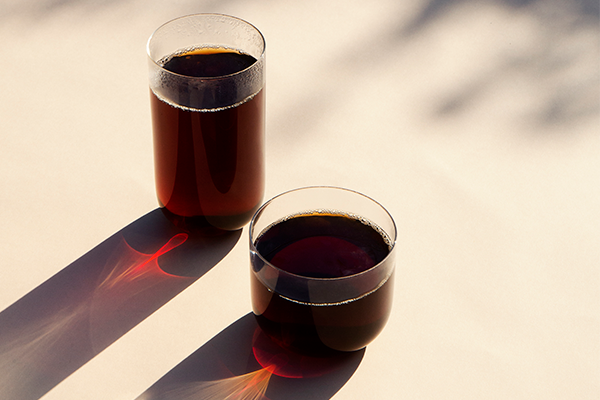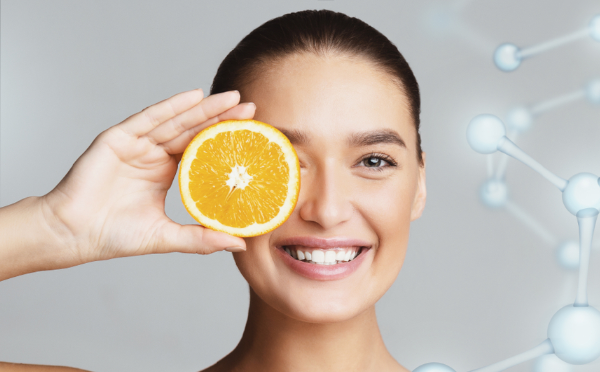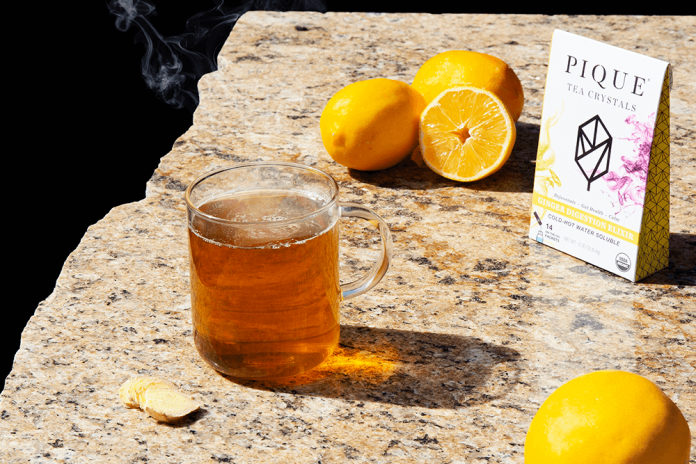Worldwide, coffee and tea are among the most widely consumed beverages. (1) A whopping 1.6 billion cups of coffee are consumed every day! (2)
That’s almost as impressive as the three cups of tea that are consumed for every one of coffee. (3) We’ll let you do that math…
Even though tea reigns globally as the most-consumed beverage after water, in many countries coffee is king. The United States being one of them. In fact, most countries are partial to one or the other: coffee dominates in the Americas and Europe while tea is preferred by most of Asia and Russia.
For many of us, the battle lines are clearly drawn – with some folks identifying as “coffee snobs” while others proclaim to be “tea snobs.”
Who’s right?!
Is there room for both?
Let’s discuss the pros and cons of these two iconic brews to see if one is indeed superior…
Caffeine
Most of us start the day with a caffeinated cup of brew for one reason: energy.
With the demands of our modern lives, this beloved nervous system stimulant is everything. And we all know that coffee has more caffeine, right? Yes and no.
What most people don’t realize is that tea leaves actually have more caffeine than coffee beans. Yup, caffeine constitutes 3.5% of tea leaves but only 1-2% of coffee beans. (4)
But, even though tea leaves have more caffeine, a brewed cup of coffee has substantially more caffeine than a brewed cup of tea. How is that possible?
It mainly has to do with how they are brewed. Plus, there’s a unique compound in tea that affects how its caffeine impacts our bodies: L-Theanine.
The brew effect
Worldwide coffee production and consumption, by weight, is higher than that of tea. Yet, as we mentioned earlier, tea consumption by cup is about three times greater.
Quite simply, this is because coffee is a more concentrated brew while tea is a diluted infusion. A cup of coffee requires more coffee beans, by weight, than tea does tea leaves. A typical 8oz brew is made from 13-16g of coffee beans, compared to only 2g of tea leaves.
This is why, cup-for-cup, coffee dominates in terms of caffeine content.
So how much caffeine is actually in our morning pick-me-up? Here is the average caffeine content of an 8 ounce cup:
- Coffee: 95-200 mg
- Matcha Green Tea*: 70-80 mg
- Black Tea: 40-70 mg
- Oolong Tea: 37-55mg
- Green Tea: 35-45 mg
- White Tea: 15-30 mg
- Herbal Tea/Tisanes: no caffeine
In case you’re wondering, 8 ounces is the size of a Starbucks “Short” cup. A what cup? The more common “Grande” is a 16-ounce serving.
*Matcha tea is unique in that we actually consume the entire leaves, ground up and mixed into water, rather than steeping and removing the leaves. This is why it has the highest caffeine content of all the teas.
The theanine effect
The caffeine molecules in caffeine and coffee are identical, but the way they affect our bodies is not. The caffeine in tea will make you feel differently than coffee does.
Tea contains L-Theanine, which has unique properties that affect our caffeine “buzz.” This amino acid helps slow the absorption of caffeine in the bloodstream and promotes feelings of calm and relaxation.
L-theanine actually crosses the blood-brain barrier to stimulate the production of gamma-aminobutyric acid (GABA), serotonin, dopamine, and alpha wave activity, all influencers of mood, brain function, and energy. (5) This balances out the stimulating effect of caffeine to create a more calm and balanced feeling of focused alertness.
So, while coffee provides a quicker, more extreme boost of energy, tea provides a more “sustained release” type of energy.
This is why tea drinkers don’t tend to experience caffeine jitters, crashes, and withdrawal like many coffee drinkers do.
What about decaf?
The maximum daily recommended intake is 400 milligrams of caffeine, or one “Grande”-sized cup of strong coffee. Coffee lovers looking to reduce their caffeine intake, or cut it out entirely, often opt for decaf beverages.
But… decaf is never actually 100% caffeine-free! How is that possible? It’s because it is impossible to remove all of the caffeine in the decaffeination process.
Plus, caffeine occurs naturally in coffee and tea, so the decaffeination process is, by definition, unnatural. For this reason, decaf options might not be well-received by purists.
Herbal teas, or tisanes, are the only 100% caffeine-free option. They’re not considered to be “true” teas, as they are not made from the Camellia sinensis plant (the origin of all black, green, oolong, white and pu’er teas).
Instead, they are made from dried flowers, leaves, seeds, or roots and can be enjoyed for their unique flavors as well as many health benefits. There is a wide selection to choose from, some popular ones are:
- Chamomile: promotes feelings of calm and supports sleep (6)
- Cinnamon: supports healthy blood sugar levels (7)
- Echinacea: promotes a healthy immune response (8)
- Lemongrass: supports relaxation and mood (9)
- Ginger and peppermint: support digestive health (10,11)
And the winner is… TEA!
Coffee has more caffeine, but tea has a better caffeine effect. This is because it has less caffeine per cup plus l-theanine, which promotes a calmer, sustained-release energy boost. Plus, there are more caffeine-free options for those trying to cut back.
Taste
Coffee and tea are both bitter, to varying degrees. They contain caffeine, which has a natural bitterness. Coffee also contains quinine, the bitter-tasting molecule in tonic water.
Research suggests that our genes might determine our perception of bitter flavors, affecting how much we enjoy them or not. (12)
Coffee is more concentrated, which intensifies its astringent taste. It is often described as “bitter” and “bold.” Coffee’s flavor profile is most influenced by the degree to which the beans are roasted.
What roasting is to coffee, fermentation is to tea.
As mentioned above, all true teas are derived from the same plant: Camellia sinensis. Fermentation causes the leaves to change in color, aroma, and flavor, becoming one of four major tea varietals: black, oolong, green, or white.
Since tea is more diluted, its taste is more subtle. Tea is often described with words like “earthy” or “herbal.” Tea’s flavor profile varies widely depending on the type, quality, and with what, if anything, it is blended.
Black and oolong tea are the most fermented and boast the strongest flavors, green tea tends to have a vegetal taste, while white tea is more floral. Herbal teas carry the flavor profile of the dried flowers, leaves, seeds, or roots with which they are made.
If you are an avid coffee-drinker looking to switch to tea, you might enjoy a full-bodied, dark, spicy black tea with a solid caffeine content, like English Breakfast, Earl Grey, or Masala Chai.
If caffeine is the only reason you drink coffee, you may want to jump on the matcha bandwagon since it boasts the highest caffeine content of all the teas. Matcha has a unique flavor profile, often described as mossy and bitter, with a subtle, lingering sweetness.
And the winner is… it’s a tie!
The flavors of both coffee and tea are largely influenced by quality, region, and especially by the roasting or fermentation process. Neither is inherently better or worse since taste is highly subjective. And possibly genetically determined. This one is a tie.
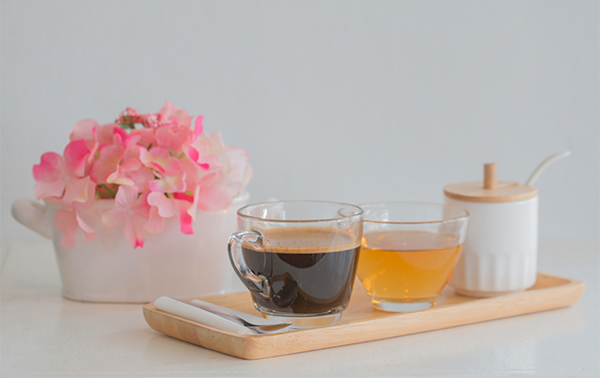
The “Cool” Factor
Mochaccinos, pumpkin spice lattes, flat whites — let’s face it, coffee lovers have way more commercially fun ways to enjoy their favorite beverage at coffeehouses.
Ok ok, the mainstream market offers chai lattes and, sometimes, matcha lattes thanks to the growing trend. But, usually, the tea selection on most cafe menus seems more like an afterthought.
Of course, most of those fancy coffee drinks are actually super unhealthy. They are usually loaded with sugar, artificial flavors, colors and other weird additives. So, cool or not, we probably shouldn’t be drinking them on the regular.
PSA: You can turn your teas into amazingly indulgent (and still healthy!) frothy treats. Some of our favorites are this black tea coconut latte and this apple spice Earl Grey latte. Yum!
And the winner is… coffee!
Chai and matcha lattes make a good effort but, compared to the wide array of fun coffee concoctions, tea just doesn’t have quite the same sex appeal. Of course “cool” doesn’t always equate to “healthy.”
Health Benefits
Speaking of healthy, let’s delve into the health benefits of everyone’s favorite brews to see which one comes out on top…
Healthy Aging
Coffee and tea are both high in polyphenols, an antioxidant found in plant foods. These unique compounds help protect our cells against harmful free radicals and support healthy aging.
However, antioxidants are sensitive to extreme heat, which is why cold-brew coffee retains more polyphenols than regular-brew. (13)
A cup of tea typically contains about 100 mg of polyphenols, including catechins and flavonoids. Regular tea consumption may help support healthy aging, metabolic function, and immunity. (14)
If you want to load up on antioxidants, go for matcha green tea. Its polyphenol content is up to 137 times higher than the already impressive China Green Tips green tea. (15)
Brain Health
Caffeine may actually help support mental clarity, memory, and overall brain health. (16)
Of course, it can also become harmful in high doses. People who consume too much caffeine or who are particularly sensitive to it might find themselves having difficulty concentrating, feeling anxious, or having trouble sleeping. (17)
The negative effects of caffeine are more likely to be experienced from coffee due to its higher caffeine content and lack of l-theanine.
Digestion
Coffee is acidic which can cause discomfort or digestive upset for some people. For people who suffer from heartburn or other symptoms of acid reflux, too much coffee can contribute to these symptoms. (18)
Coffee is also a laxative, which may be beneficial or problematic, depending on your, um, regularity.
A unique feature of tea polyphenols is that they actually act as prebiotics, meaning they help feed the bacteria that live in our digestive tract. These microbes, known as the microbiome, play an important role in digestion, weight management, and immune function.
Green tea, black tea, and oolong tea may be especially beneficial in supporting great gut health. (19)
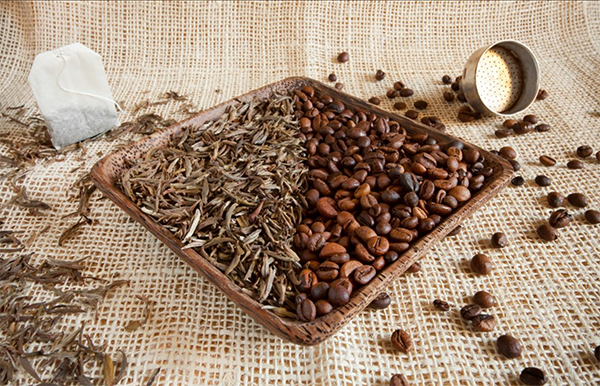
Hydration
Most of us don’t drink enough water. And given that our bodies are about 60% water, consuming (and retaining) enough of it is essential.
Caffeine is a diuretic, meaning it makes you pee.
Coffee’s significantly higher caffeine content makes it more dehydrating than tea, which is basically flavored water.
And the winner is… TEA!
Tea offers all the same health benefits of coffee (and possibly more!) with fewer potential side effects.
Making the “Perfect Cup”
Making your own morning brew is essential if you want to avoid donating your entire life’s fortune to your favorite coffee shop.
Sure, if we compare instant coffee to tea bags, the preparation is about the same: just add hot water. But we’re talking the perfect cup here. And, while that is somewhat subjective, most of us agree it doesn’t come from instant coffee granules or bags of tea sediment.
Coffee and tea can both be finicky about a few things: water quality and appropriate temperature are paramount. Beyond that, sourcing quality tea is really the hardest part of making the perfect cup of tea.
The perfect cup of coffee, on the other hand, requires sourcing quality beans but also grinding them just before steeping. This is because the quality and taste of coffee beans begins to deteriorate almost immediately after they are ground. After you grind the beans, you then need to steep them one of three ways: pour over, french press, or drip.
And the winner is… TEA!
The need to grind coffee beans adds a layer of complexity–and time–to the brewing process, giving tea the edge in this category.
Final Thoughts
And the winner is…? TEA!
Though it was a close fight…
The l-theanine in tea is a major selling point due to its ability to offer a calmer, more stable boost of energy compared to coffee, which has caffeine alone. Drinking tea also boasts some impressive health benefits, including prebiotic properties, without the potential downsides that come with drinking coffee.
